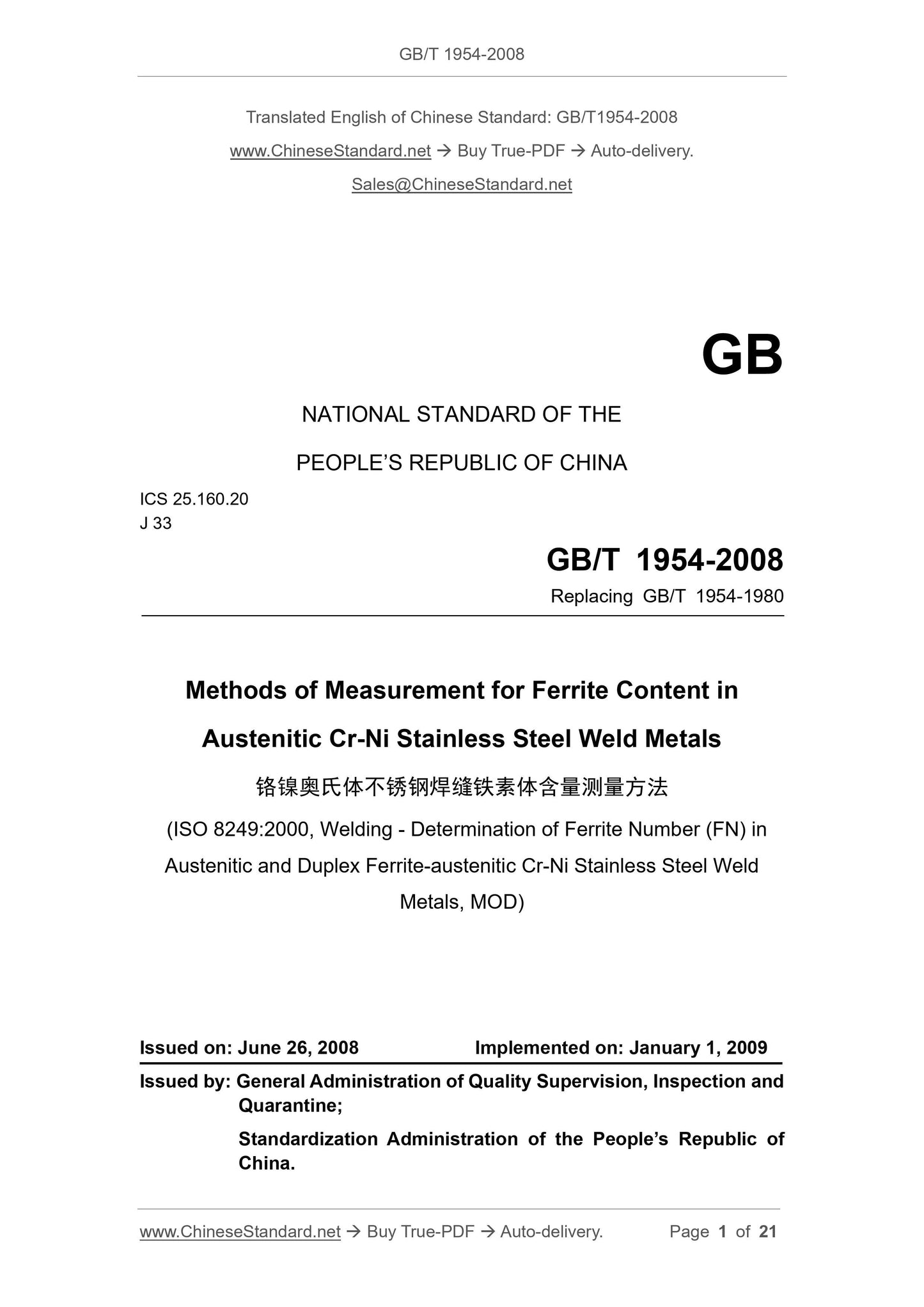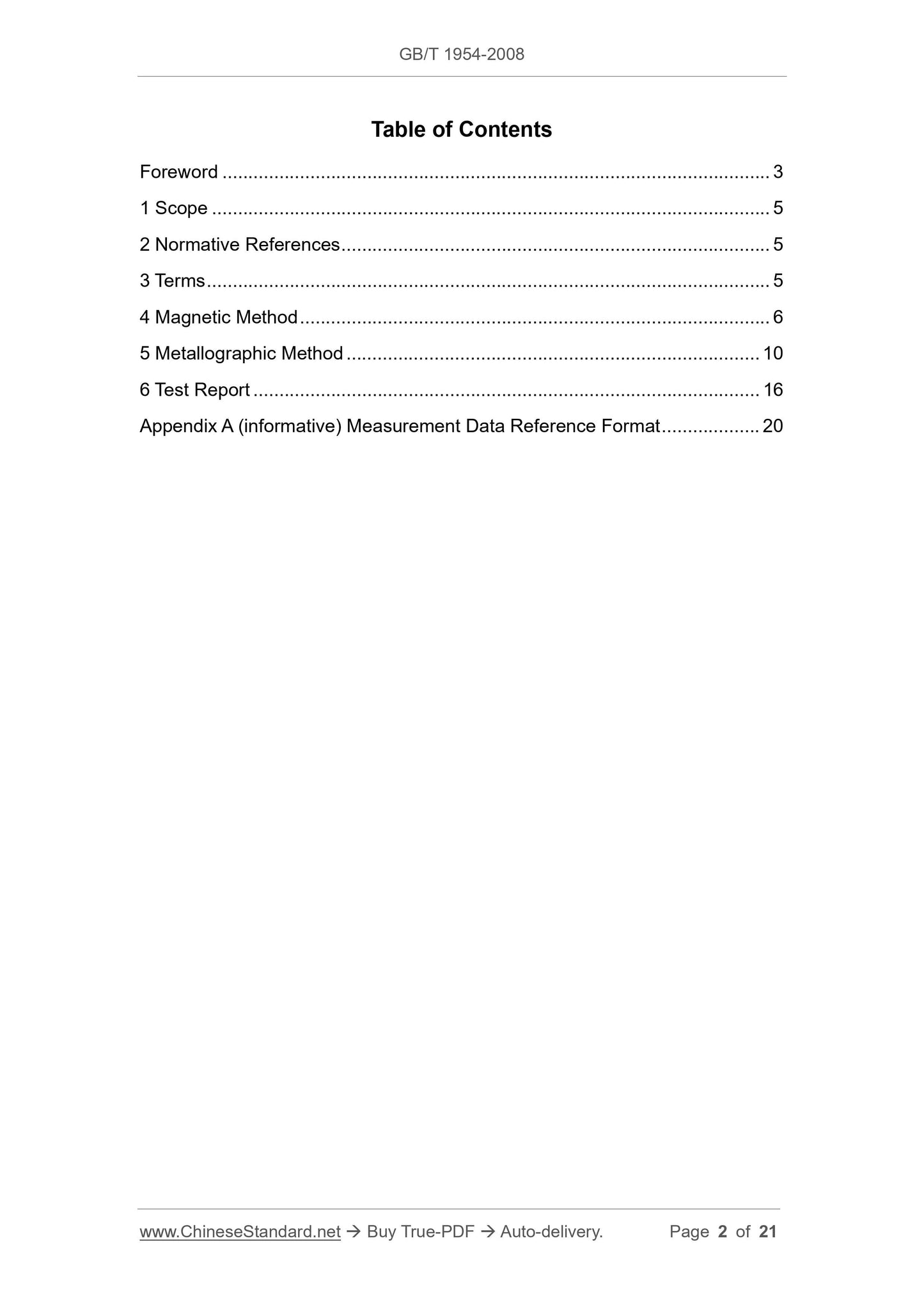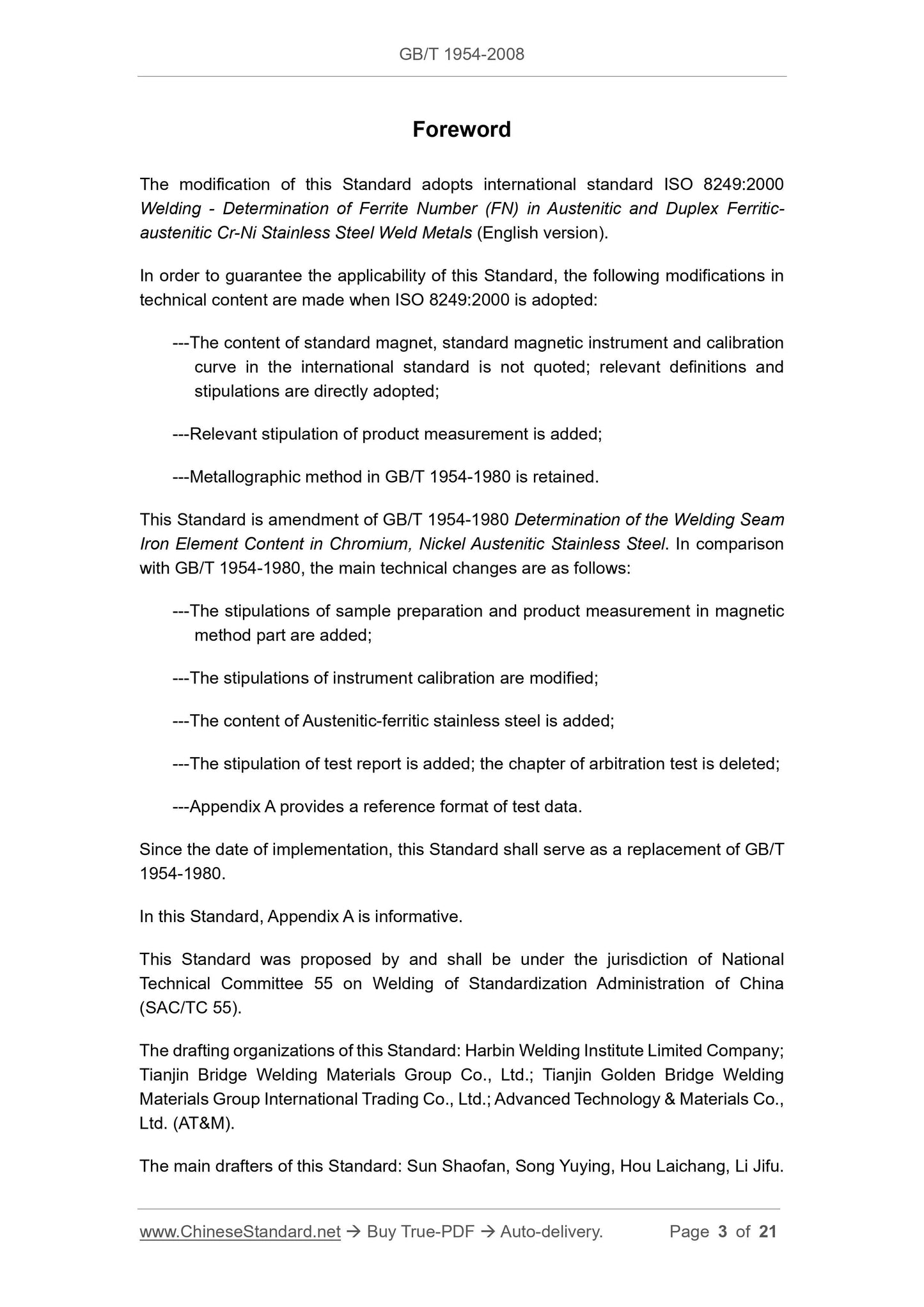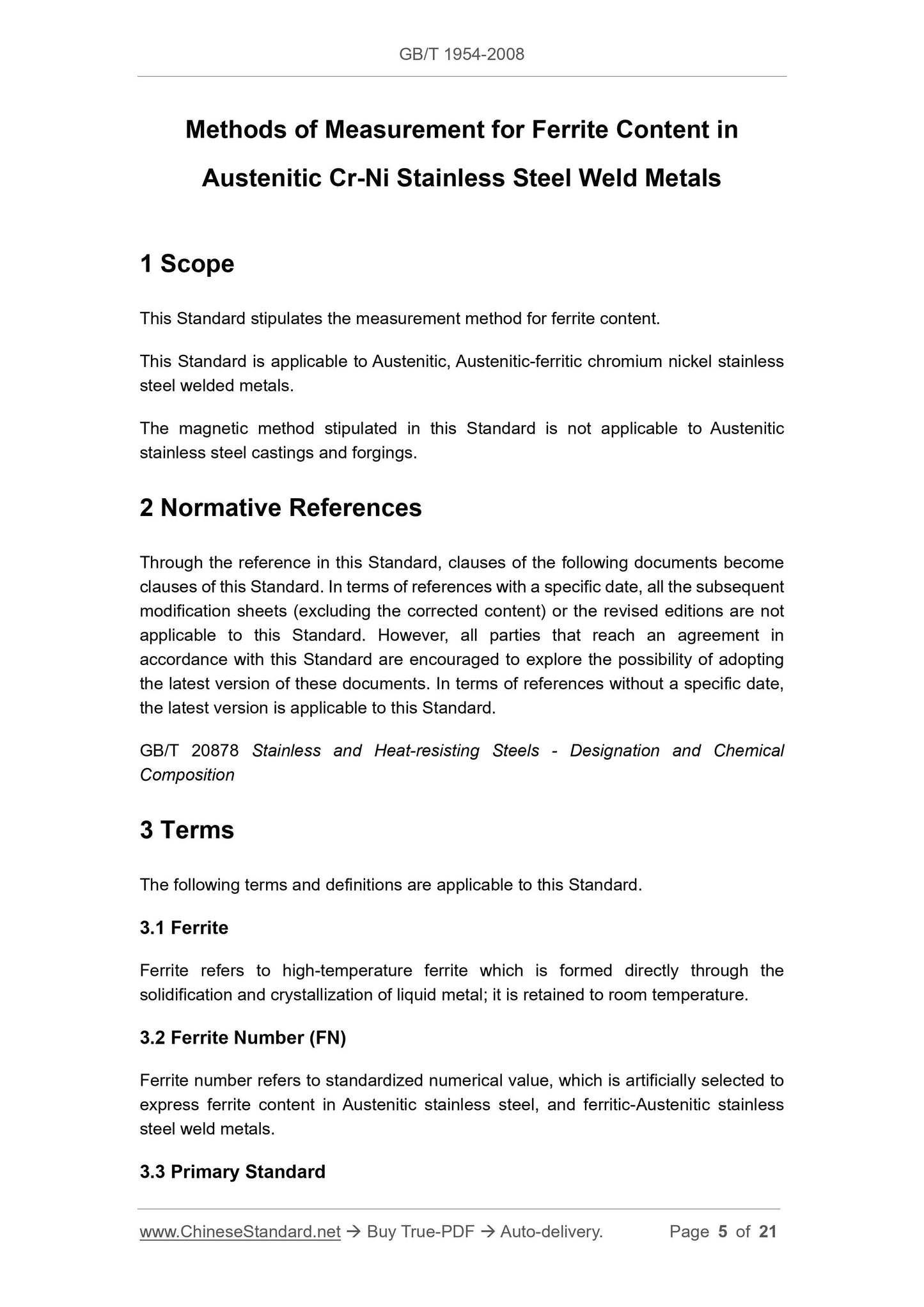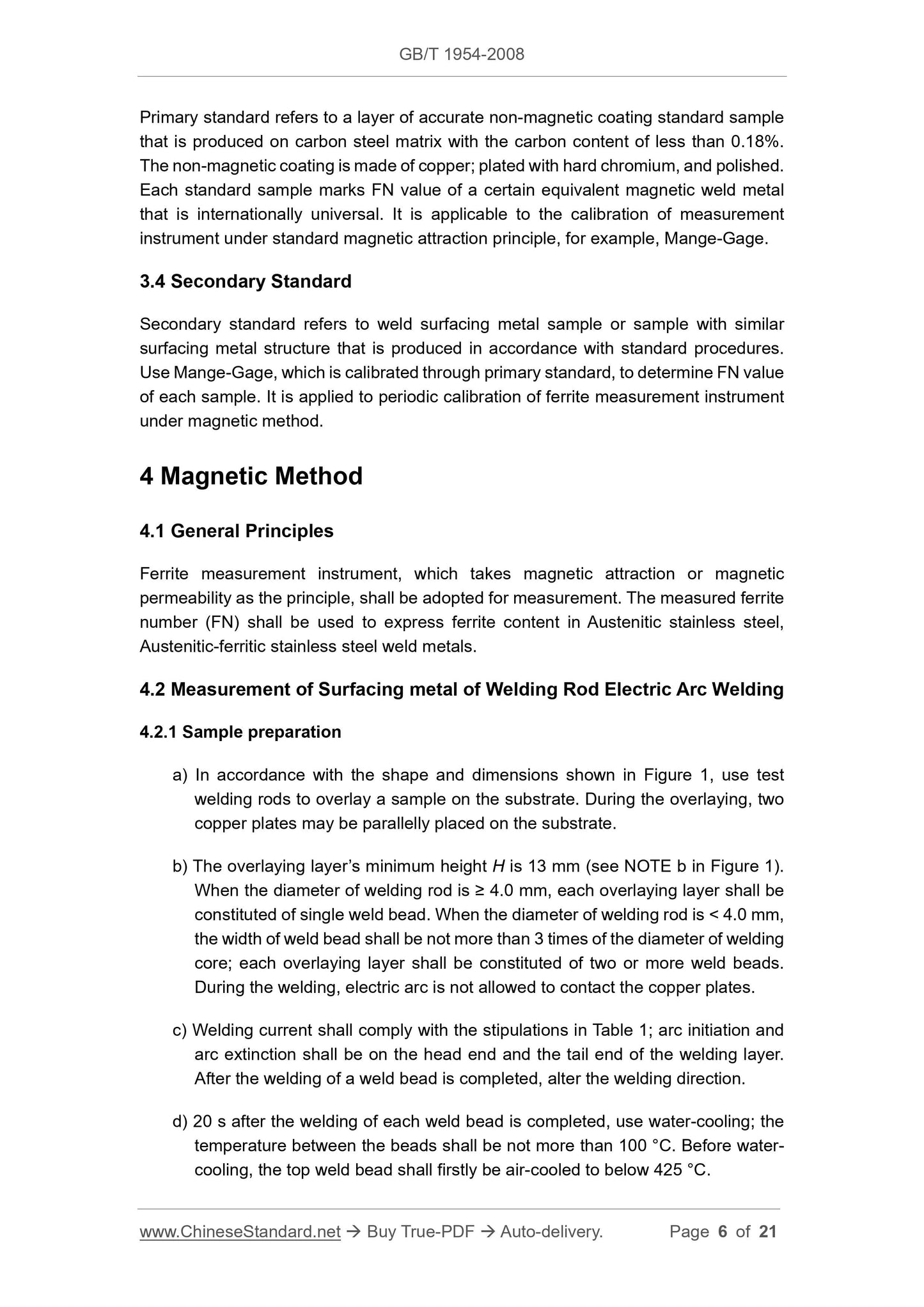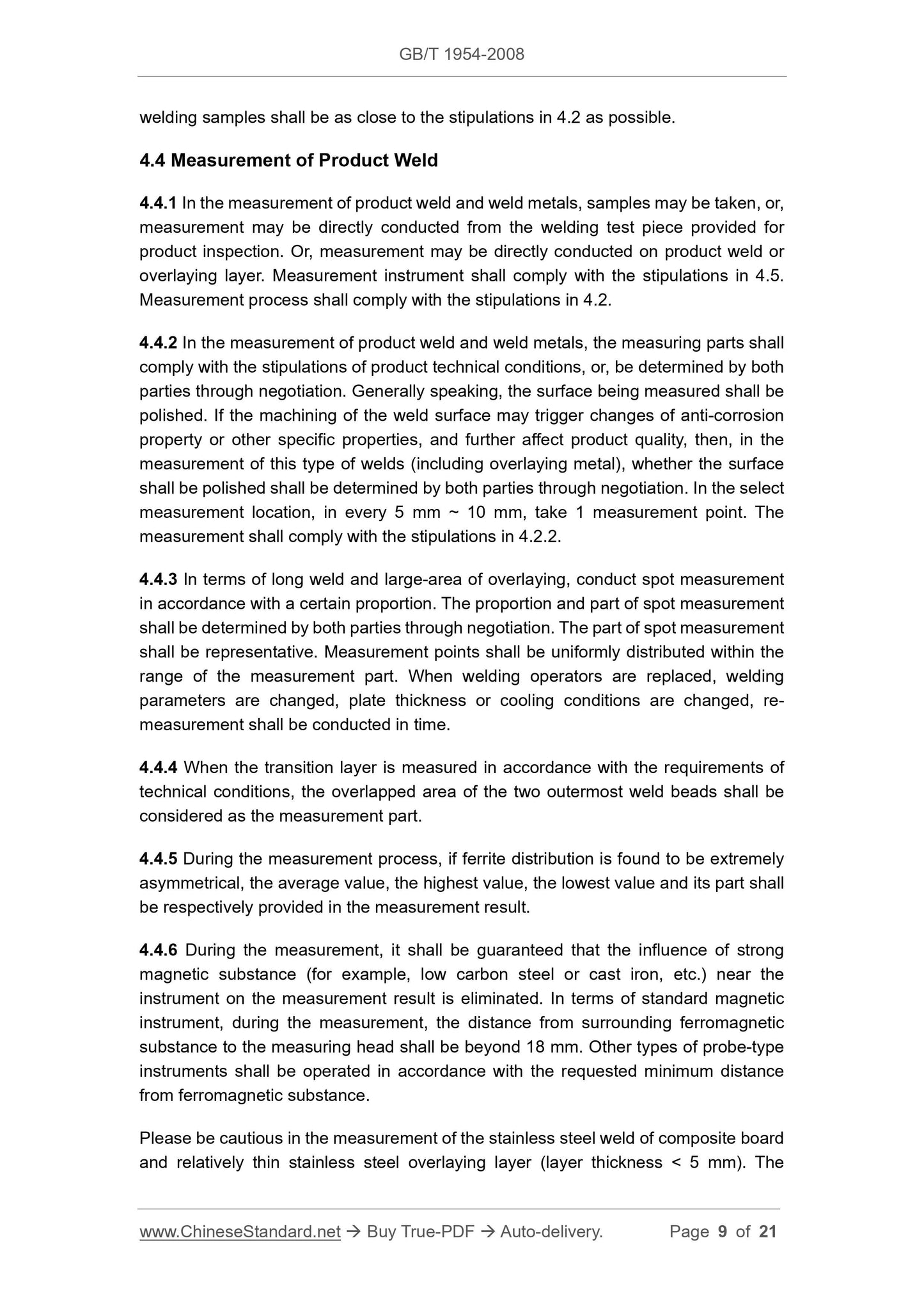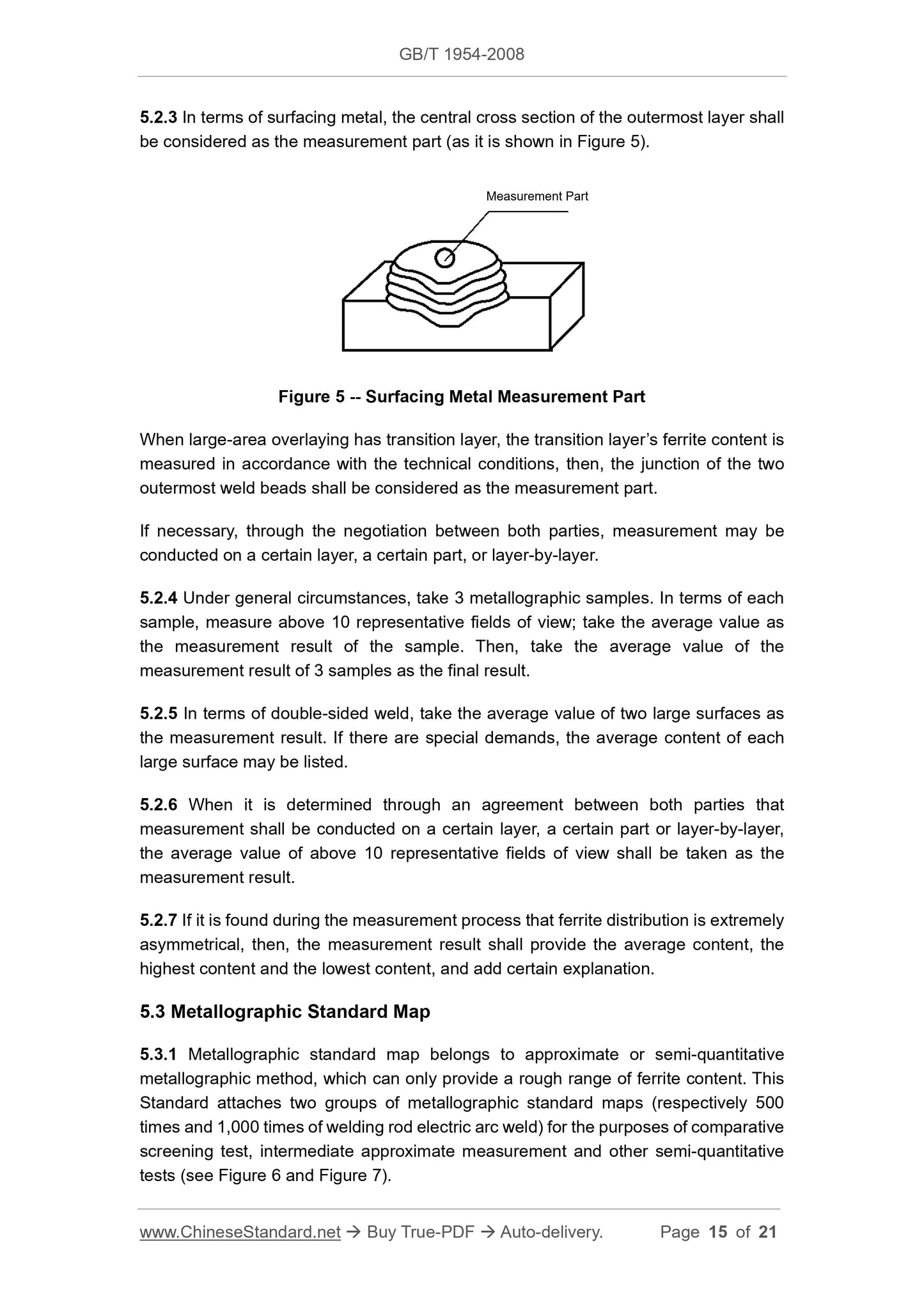1
/
of
7
www.ChineseStandard.us -- Field Test Asia Pte. Ltd.
GB/T 1954-2008 English PDF (GB/T1954-2008)
GB/T 1954-2008 English PDF (GB/T1954-2008)
Regular price
$145.00
Regular price
Sale price
$145.00
Unit price
/
per
Shipping calculated at checkout.
Couldn't load pickup availability
GB/T 1954-2008: Methods of measurement for ferrite content in austenitic Cr-Ni stainless steel weld metals
Delivery: 9 seconds. Download (and Email) true-PDF + Invoice.Get Quotation: Click GB/T 1954-2008 (Self-service in 1-minute)
Newer / historical versions: GB/T 1954-2008
Preview True-PDF
Scope
This Standard stipulates the measurement method for ferrite content.This Standard is applicable to Austenitic, Austenitic-ferritic chromium nickel stainless
steel welded metals.
The magnetic method stipulated in this Standard is not applicable to Austenitic
stainless steel castings and forgings.
Basic Data
| Standard ID | GB/T 1954-2008 (GB/T1954-2008) |
| Description (Translated English) | Methods of measurement for ferrite content in austenitic Cr-Ni stainless steel weld metals |
| Sector / Industry | National Standard (Recommended) |
| Classification of Chinese Standard | J33 |
| Classification of International Standard | 25.160.20 |
| Word Count Estimation | 15,115 |
| Date of Issue | 2008-06-26 |
| Date of Implementation | 2009-01-01 |
| Older Standard (superseded by this standard) | GB/T 1954-1980 |
| Adopted Standard | ISO 8249-2000, MOD |
| Regulation (derived from) | National Standard Approval Announcement 2008 No.11 (Total No.124) |
| Issuing agency(ies) | General Administration of Quality Supervision, Inspection and Quarantine of the People's Republic of China, Standardization Administration of the People's Republic of China |
| Summary | This standard specifies the methods of measurement of ferrite content. This standard applies to austenitic, austenitic ferritic chrome-nickel stainless steel weld metal. This standard specifies the method is not applicable to magnetic austenitic stainless steel castings and forgings. |
Share
